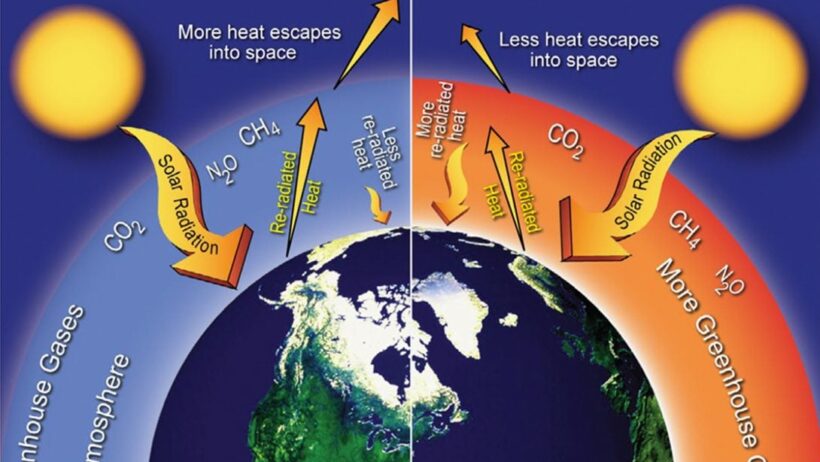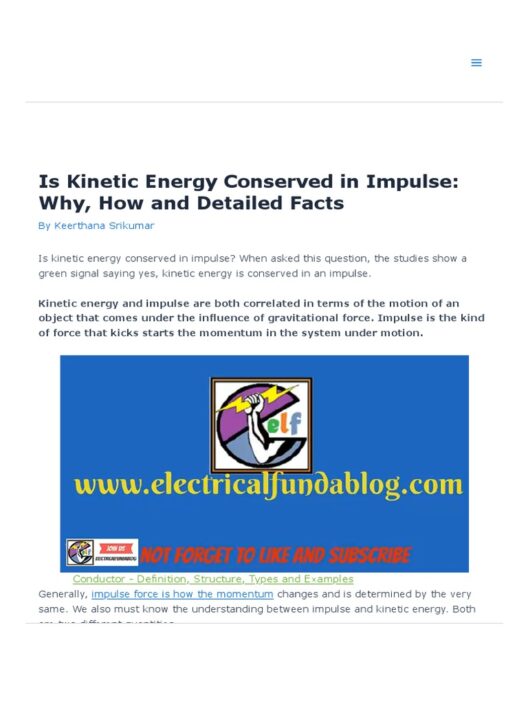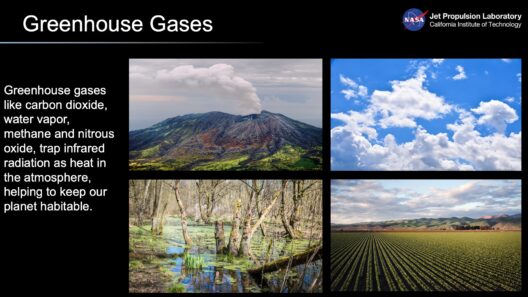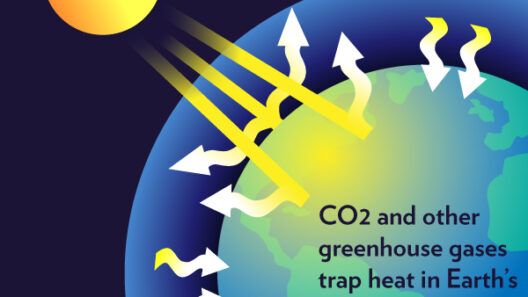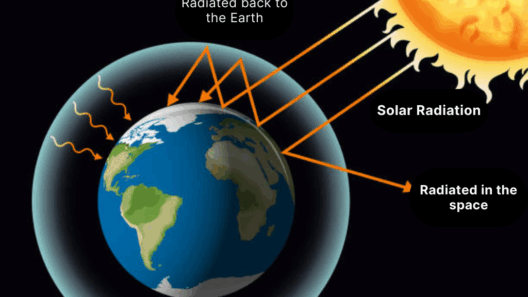The greenhouse effect is a critical phenomenon that underpins the broader narrative of climate change. It’s an intricate web of causes and consequences that shapes the environment in ways many may not fully comprehend. Understanding the drivers of the greenhouse effect is vital for addressing the challenges posed by global warming. This article dissects the primary causes of the greenhouse effect and elucidates the factors that exacerbate our climate crisis.
At its core, the greenhouse effect occurs when certain gases in the Earth’s atmosphere trap heat. This process is essential for maintaining a habitable climate; however, human activities have intensified this natural mechanism, leading to dangerous temperature increases. A closer examination reveals that the primary contributors—carbon dioxide, methane, nitrous oxide, and fluorinated gases—have varied origins, each with unique implications on our planet.
Every ounce of knowledge we gain about these gases enriches our understanding of their aesthetic charm and alarming impacts.
Examining these main culprits of the greenhouse effect reveals not only their sources but also the broader context of anthropogenic actions.
Carbon Dioxide: The Prolific Pulse of Industry
Carbon dioxide (CO2) is the most prevalent greenhouse gas produced by human activity, accounting for the majority of emissions that stimulate the greenhouse effect. Released primarily through the combustion of fossil fuels for electricity, heat, and transportation, the sheer volume of CO2 is staggering. In fact, it rivals the very fabric of our industrialized society.
Deforestation exacerbates this challenge. Trees act as carbon sinks, absorbing CO2 from the atmosphere. When forests are cleared for agriculture, urban development, or logging, not only is this natural sequestration halted, but the carbon stored in trees is released back into the atmosphere, compounding the issue. The symbiotic relationship between forests and climate regulation is crucial, making deforestation a grave concern.
The allure of fossil fuels lies in their energy density, which has powered economies, cities, and innovations. However, the aesthetic appeal of progress may come at the cost of our planet’s stability. Each car that travels on a highway, each factory that breathes life into products, contributes to the carbon footprint that spells disaster.
Methane: The Swift Footprint of Agriculture and Waste
Methane (CH4) is another potent greenhouse gas, known for its remarkable ability to trap heat, with a global warming potential significantly higher than that of carbon dioxide, albeit present in smaller quantities. Correlating its emissions largely with agriculture, landfills, and the oil and gas industries unveils a complex interplay of human habits and natural systems.
Interestingly, agriculture, particularly livestock farming, is responsible for a considerable amount of methane emissions. Ruminants, such as cows and sheep, produce methane during digestion—a process known as enteric fermentation. Additionally, improper waste management practices in landfills release methane as organic waste decomposes anaerobically.
The aesthetic perspective shifts as one considers the juxtaposition of pastoral landscapes against the reality of agricultural practices that drive methane emissions. The idyllic image of grazing cattle starkly contrasts with their greenhouse gas contributions, invoking a call for sustainable agricultural practices to reduce methane cultivation.
Nitrous Oxide: The Invisible Threat
Nitrous oxide (N2O) represents yet another critical greenhouse gas, primarily emitted from agricultural and industrial activities, as well as during combustion of fossil fuels and solid waste. This gas possesses a global warming potential approximately 298 times that of carbon dioxide over a century, making it an insidious player in the greenhouse effect due to its invisibility.
Soil management practices significantly influence nitrous oxide emissions. The application of nitrogen-based fertilizers, while necessary for crop yields, can result in substantial N2O release when microbes in the soil transform excess nitrogen into this potent gas. The challenge lies in finding balance—optimum yields without compromising atmospheric integrity.
In examining the ubiquitous presence of nitrous oxide, we unearth the tension between agricultural demand and environmental sustainability, reminding us of the fragility inherent in our methods of food production. This interplay highlights a pressing need for innovative approaches that harmonize productivity with ecological responsibility.
Fluorinated Gases: The Synthetic Intruders
Among the lesser-known culprits of greenhouse gas emissions are fluorinated gases, a group of synthetic compounds often found in industrial applications. While they account for a smaller percentage of overall emissions, their potency is alarming. These gases, including hydrofluorocarbons (HFCs), perfluorocarbons (PFCs), and sulfur hexafluoride (SF6), can remain in the atmosphere for extended periods, contributing to warming effects that are difficult to measure in short timescales.
The aesthetic appeal of fluorinated gases lies in their utility; they are often used in air conditioning, refrigeration, and even aerosol products. However, the allure of comfort comes with a caveat, as these gases highlight the paradox in modern living—comfort and convenience at the potential expense of the atmosphere’s health.
In conclusion, the greenhouse effect is a result of a complex interplay of various gases, primarily emitted through human activities. From carbon dioxide’s industrial legacy to methane’s swift impacts in agriculture, understanding these factors is paramount. The aesthetic dimensions of our world—its beauty and comfort—are intricately woven with the environmental challenges we face today. Recognizing the allure of convenience and its consequences is the first step toward fostering a more sustainable relationship with our planet, ensuring that we protect its delicate balance for generations to come.

